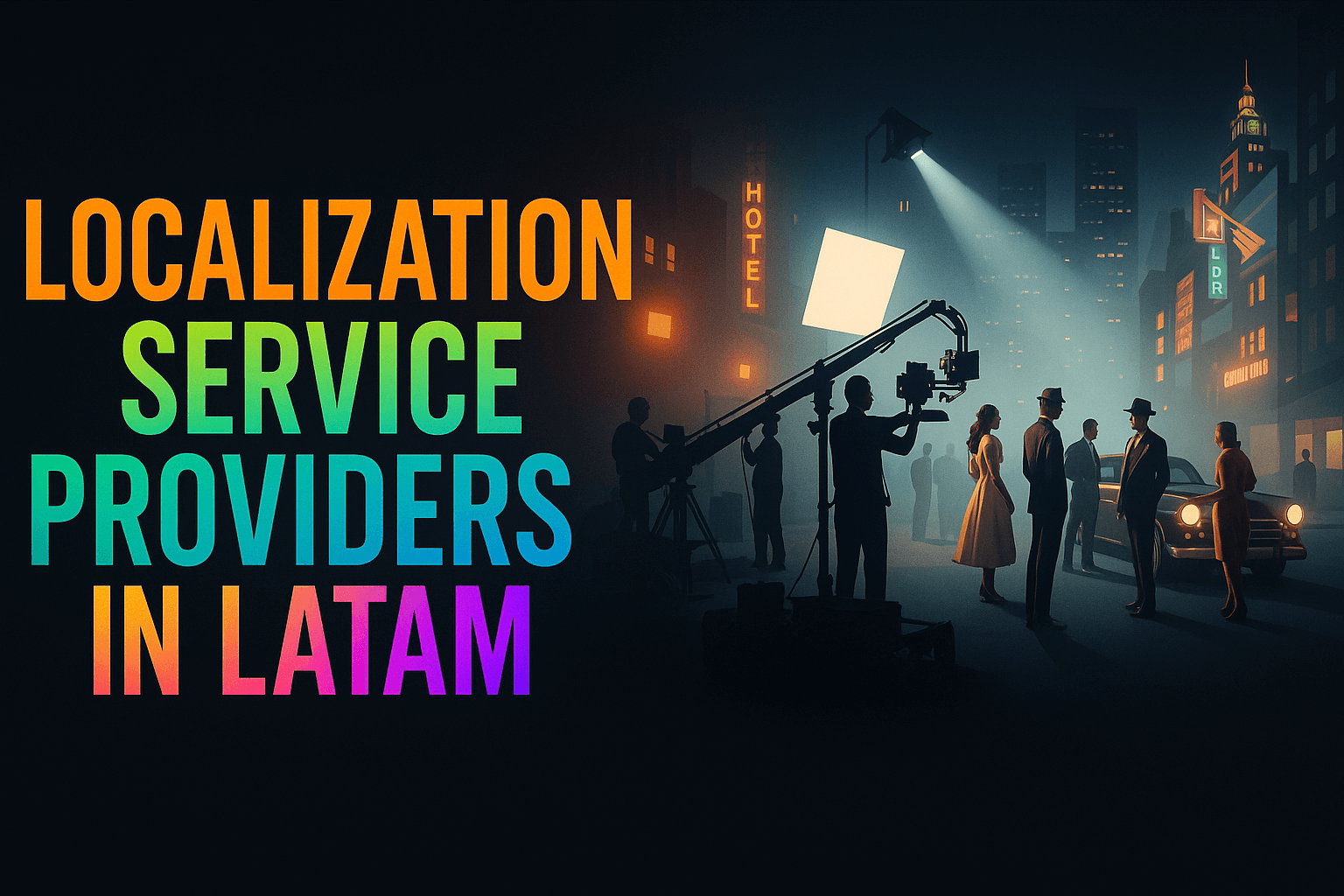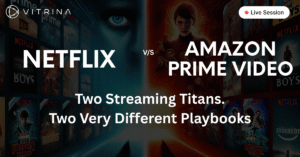The Executive’s Guide to Sourcing Localization Service Providers in LATAM

Introduction
Latin America represents one of the most promising and complex growth markets in the global media and entertainment industry. With a rapidly expanding middle class, high rates of mobile and internet adoption, and a deep-rooted cultural affinity for storytelling, the region offers immense potential for content creators and distributors.
However, successfully penetrating this market requires more than just translating content. It demands true localization that respects the intricate cultural and linguistic nuances of each country.
The challenge for today’s media executives lies in the strategic task of localization service provider sourcing LATAM region, a process that is fragmented, opaque, and fraught with potential missteps.
This article will provide a clear, actionable framework for executives to navigate this landscape with confidence, turning a complex operational challenge into a strategic advantage.
Key Takeaways
| Core Challenge | The Latin American localization market is highly fragmented, making it difficult to find and vet partners with the verified expertise to handle diverse linguistic and cultural nuances. |
| Strategic Solution | Adopt a data-driven approach to sourcing and vetting localization partners, focusing on verified expertise, past collaborations, and technical capabilities to ensure cultural accuracy. |
| Vitrina’s Role | Vitrina is a leading platform that provides real-time, verified intelligence on global film and TV projects, company profiles, and executive contacts to address the industry’s fragmentation challenge. |
Understanding the LATAM Localization Market
Successfully localizing content for Latin America is not a simple matter of providing a single “Latin American Spanish” or “Brazilian Portuguese” version. While these languages are dominant, a strategic approach recognizes the distinct linguistic and cultural variations from Mexico to Argentina.
According to a 2025 report from Americas Market Intelligence, Latin America is experiencing rapid digital transformation, with over 75% of the population now having internet access, fueling the growth of streaming services and digital media.
This digital shift has made nuanced localization more critical than ever, as audiences increasingly expect content that feels native to their specific country.
The market for localization is a direct reflection of this complexity. A provider that excels in localizing content for the Mexican market, with its specific slang and cultural references, may not be the ideal partner for a project targeting the diverse dialects of Colombia or the unique cultural context of Brazil.
Simply put, relying on a one-size-fits-all solution for a region of over 660 million people is a significant business risk that can damage brand perception and alienate key audiences. A strategic approach demands a granular understanding of the region’s nuances and requires partnerships with providers who possess verified, on-the-ground expertise.
This complexity is compounded by the fact that the entertainment supply chain in LATAM is vast and often opaque. A major pain point for executives is the lack of visibility into the track records of smaller, specialized localization houses, forcing them to rely on an inefficient network of referrals and limited public information.
This makes it challenging to properly vet partners for their specific capabilities in areas like dubbing, subtitling, or cultural adaptation for specific sub-regions.
The Strategic Imperative of Due Diligence
The stakes for choosing the right localization partner are exceptionally high. A poor choice can lead to content that misses its mark, is culturally insensitive, or simply fails to resonate, resulting in lost market share and a diminished return on investment.
The process of localization service provider sourcing LATAM region is therefore an exercise in risk mitigation and strategic due diligence.
Traditional methods of scouting and vetting are no longer sufficient. Relying on basic company websites or self-reported credits provides an incomplete picture.
An executive needs to answer critical questions:
Has this company worked on projects of a similar scale?
What specific genres or formats do they specialize in?
Who are the key decision-makers, and what is their professional history?
Without a data-driven approach, these answers are difficult to find, leaving executives to make critical decisions with a high degree of uncertainty.
A more effective strategy requires access to a centralized, real-time source of verified industry intelligence. This includes information on a company’s past project collaborations, their operational scale, and the professional profiles of their key executives.
This level of due diligence allows you to move beyond surface-level claims and assess a potential partner’s true capabilities and reputation in the market.
A Framework for Sourcing and Vetting
To move from a reactive search to a proactive sourcing strategy, executives should follow a structured framework. First, define the specific localization needs of the project. This involves identifying the target countries, the required services (e.g., dubbing vs. subtitling), and the genres of content being localized.
Next, conduct a data-driven search using a professional intelligence platform. This allows you to filter and identify potential partners based on criteria that are critical for your project.
You can search for companies by their track record in specific sub-regions of LATAM, their specialization in genres like animation or drama, and their experience with major studios or streaming services. This targeted search provides a curated list of vetted companies that meet your core requirements.
Finally, verify the information and connect with key decision-makers. Use the platform to cross-reference a company’s claimed credits and understand its full scope of work.
A critical step is to identify and reach out to the specific executive who handles new business or production partnerships, bypassing the traditional gatekeepers.
A 2024 report by Auxis on the state of the shared services and outsourcing industry in Latin America found that the ability to support more complex processes and cultural affinity were among the top factors for success, underscoring the importance of finding a partner with a deep understanding of the local market.
How Vitrina Transforms the Sourcing Process
Vitrina is an intelligence platform designed to operationalize this strategic framework for localization service provider sourcing LATAM region. It provides the data and tools necessary to move from manual, guesswork-based sourcing to a proactive, data-driven strategy.
With a database of over 500,000 global projects and 160,000 companies, Vitrina offers unparalleled visibility into the Latin American market. You can search for localization providers by their specific services, the genres they specialize in, and their recent projects.
This allows you to quickly generate a shortlist of potential partners who have a proven track record of success in your exact niche. For instance, you could filter for companies that have localized content for major streamers in the Brazilian market, with a focus on comedy.
Moreover, Vitrina provides the crucial business intelligence needed for due diligence. Its company profiles include verified information on key executives, past clients, and collaborators.
This lets you assess a provider’s operational scale and market reputation before you even pick up the phone. The platform also includes a directory of over 3 million executives, making it simple to find and connect with the specific person you need to reach, bypassing the traditional gatekeepers.
Vitrina’s human-verified data ensures you are making a decision based on accurate, real-time intelligence.
Conclusion: Powering Your Next Strategic Move
Successfully expanding into the Latin American market requires more than a simple transaction. It requires a strategic partnership with a localization provider who understands the region’s intricate cultural and linguistic landscape.
The challenge of localization service provider sourcing LATAM region is a direct result of the market’s fragmentation. By adopting a data-driven approach, powered by a platform like Vitrina, you can gain a complete, verified view of the entertainment supply chain.
This empowers you to identify, vet, and connect with the perfect partners for your project, ensuring your content resonates with local audiences and secures a stronger competitive position.
Frequently Asked Questions
Translation focuses on converting text from one language to another while maintaining linguistic accuracy. Localization is a broader process that adapts content to align with the cultural, legal, and regional nuances of the target audience, ensuring it resonates authentically.
To ensure cultural accuracy, it is essential to partner with localization providers who are native speakers of the target language and have a deep understanding of the specific cultural nuances of that region. Always request a portfolio of their work in that market.
The two most prominent languages are Spanish and Brazilian Portuguese. However, a strategic approach recognizes that Spanish has many dialects and cultural variations across countries like Mexico, Colombia, and Argentina, requiring a more granular approach.















































